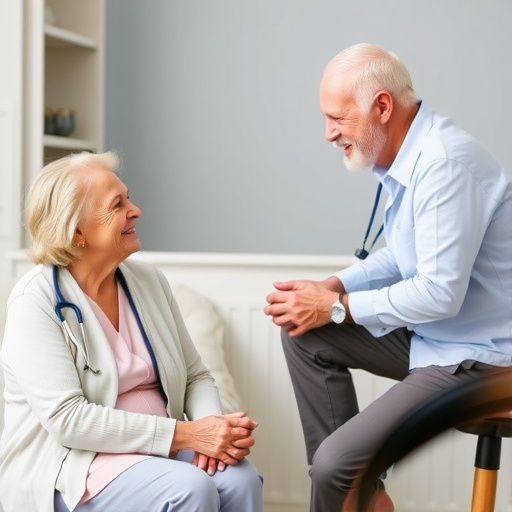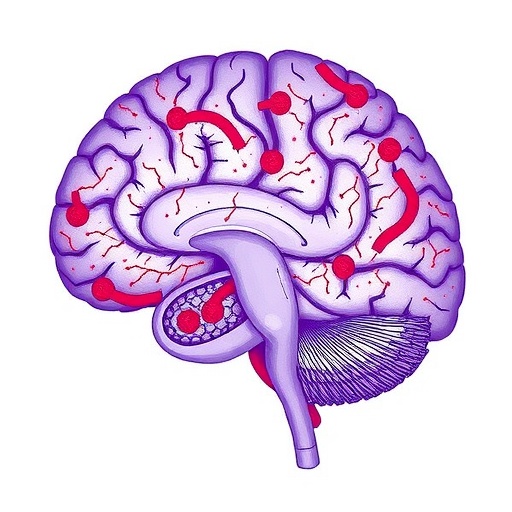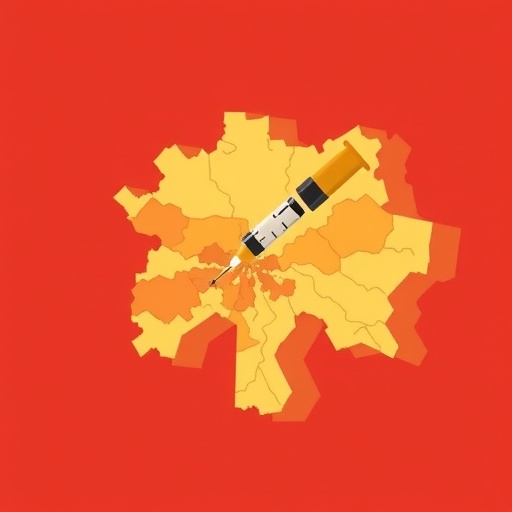In a rapidly aging global population, the risks associated with falls among older adults remain a pressing concern for healthcare professionals, caregivers, and families alike. Recent research highlights the nuanced perceptions of falls risk, shedding light on the varying degrees of awareness and understanding among older adults and their carers. This study by Hasan and colleagues, published in BMC Geriatrics, delves deep into the intricate dynamics surrounding falls risk perceptions, providing crucial insights that could transform prevention strategies and enhance the quality of life for older adults.
Falls among older adults are not merely a matter of physical danger; they also carry significant psychological implications. These incidents can lead to a loss of independence, a decrease in confidence, and an overall decline in mental health. Recognizing and addressing the psychological aspects of falls is critical. Many older adults may underestimate their fall risk due to a lack of understanding or previous experiences. This disconnect underscores the necessity for educational initiatives that can bridge the gap between perceived and actual risk.
The cross-sectional nature of the study allows for a comprehensive snapshot of the attitudes and beliefs surrounding fall risk. By employing a diverse sample of older adults and their care providers, the research encapsulates a variety of perspectives. This variety is crucial for developing tailored interventions that acknowledge not just the objective risks but also the subjective perceptions that shape behaviors and attitudes towards fall prevention.
One of the standout findings from the study is the importance of communication between older adults and their caregivers. Effective dialogue is essential for fostering an environment where concerns about falls can be discussed openly. Both parties often influence each other’s perceptions significantly; thus, enhancing communication channels can lead to better understanding and improved strategies for mitigating falls. The study suggests that caregivers play a pivotal role in educating older adults about the real risks while also encouraging them to voice their fears and concerns.
Moreover, the research taps into the role of socio-demographic factors in shaping fall risk perceptions. Variations in age, gender, socioeconomic status, and living conditions significantly influence how older adults and their carers perceive the risk of falls. For instance, those living alone may feel more vulnerable compared to those with support systems. Understanding these dynamics can help healthcare providers create targeted programs addressing the specific needs of different demographics.
As the study demonstrates, the fear of falling is often as debilitating as the physical risks associated with it. Many older adults develop a heightened sense of vulnerability that can lead them to avoid activities they once enjoyed. This can trigger a downward spiral of isolation and decreased physical activity, exacerbating the very risks they dread. Encouragingly, the research advocates for initiatives that empower older adults to engage in physical activities safely, highlighting the dual importance of physical fitness and mental resilience.
The findings also underscore the need for more comprehensive training programs for caregivers. Educators and health professionals must equip carers with the necessary tools to assess and communicate fall risks effectively. The knowledge gained from this research can inform new educational curricula that emphasize risk perception, safety protocols, and proactive engagement with older adults.
Furthermore, technology emerges as an intriguing ally in the fight against falls. Innovations in medical devices, remote monitoring systems, and mobile health applications can play a transformative role in both preventing falls and managing at-risk individuals. The study suggests that integrating technology into care practices can enhance monitoring and provide real-time data, allowing for quicker responses to potential fall situations.
In addition to practical implications, the study raises important ethical questions regarding autonomy and intervention. Striking a balance between ensuring safety and respecting the independence of older adults is essential. While interventions are necessary, they must be designed with the understanding that older adults should have a say in their care and an active role in decision-making processes surrounding their safety.
Challenges remain in implementing the study’s recommendations in real-world scenarios. Stakeholders must navigate healthcare systems, funding limitations, and varying degrees of willingness among older adults to engage with new initiatives. However, the necessity to address these challenges is paramount as the aging population continues to grow, making the insights garnered from this research more relevant than ever.
As communities consider how to implement the findings from this study, collaboration among healthcare providers, policymakers, and community organizations will be crucial. By fostering partnerships that prioritize fall prevention strategies, stakeholders can create more supportive environments for older adults and their carers, ultimately reducing the prevalence of falls and improving overall well-being.
Moreover, continued research in this area is vital. The landscape of aging is continuously evolving, necessitating ongoing studies that explore the intricacies of falls risk and perception. Future research can provide even deeper insights into the psychological, social, and environmental factors that influence how older adults view their risk of falling.
In conclusion, Hasan’s research serves as a clarion call for innovation and empathy in addressing the challenges of fall risks among older adults. As we strive to create environments conducive to independence, safety, and dignity, the findings of this cross-sectional study offer a framework for understanding and transforming perceptions of fall risk, paving the way for improved interventions and a better quality of life for older adults.
Subject of Research: Falls risk perception among older adults and carers
Article Title: Falls risk perception among older adults and carers: a cross-sectional study
Article References:
Hasan, M., Walsh, B., Oldmeadow, C. et al. Falls risk perception among older adults and carers: a cross-sectional study. BMC Geriatr 25, 750 (2025). https://doi.org/10.1186/s12877-025-06403-9
Image Credits: AI Generated
DOI: 10.1186/s12877-025-06403-9
Keywords: Falls risk perception, older adults, caregivers, cross-sectional study, BMC Geriatrics
Tags: attitudes towards falls among caregiverscaregiver perceptions of fall riskcross-sectional study on fall riskeducational initiatives for fall preventionenhancing quality of life for seniorsfalls risk awareness in seniorsimportance of fall risk educationindependent living for older adultsmental health implications of fallspsychological impacts of falls on older adultstransforming fall prevention strategiesunderstanding falls risk among elderly





